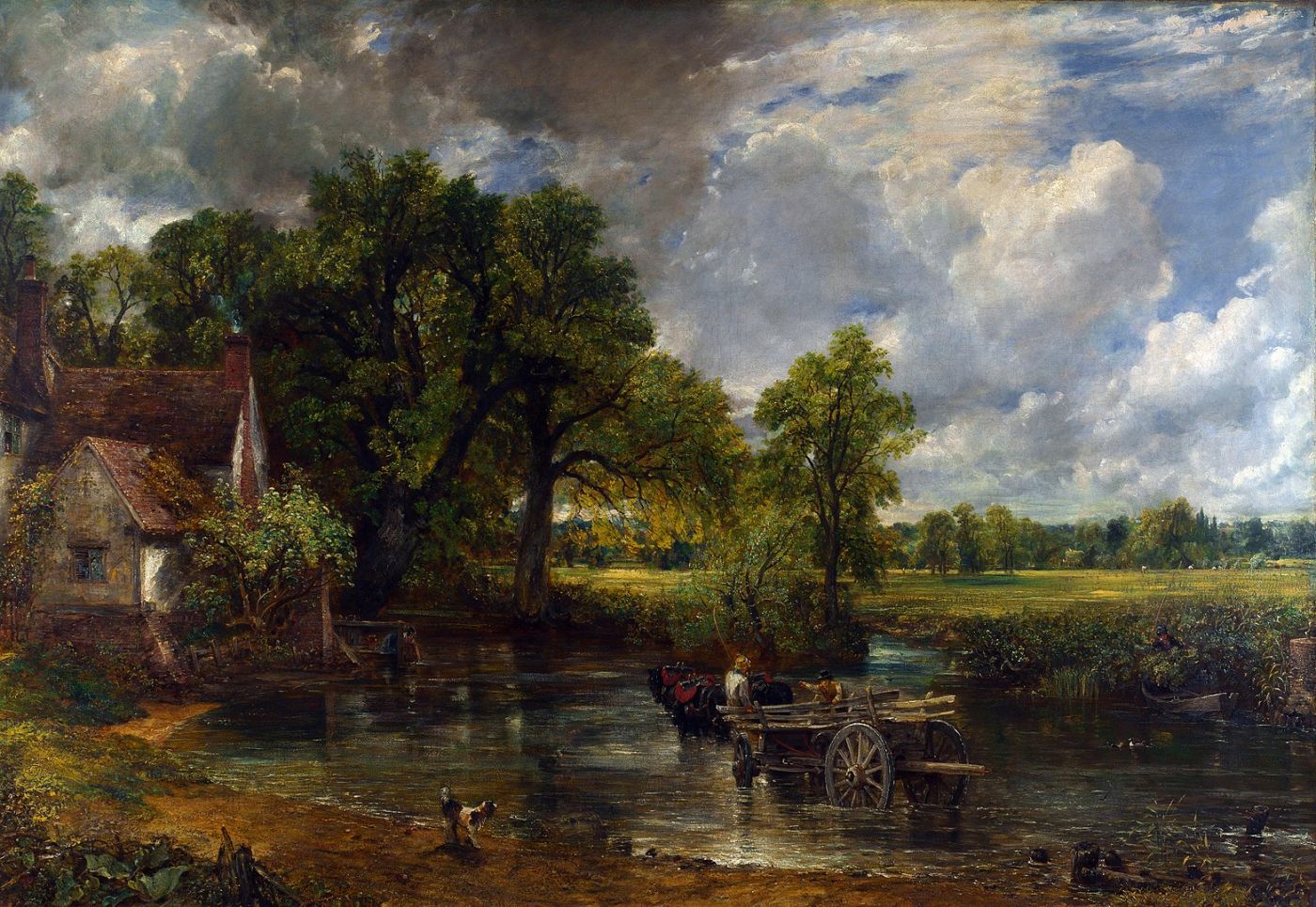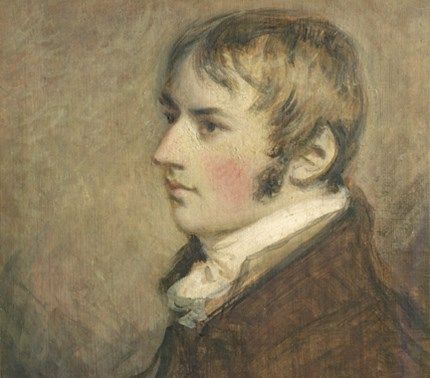Greeting to all my readers!!
This blog is my second article in the "Tour the world with artworks" series. Last time, I wrote about the most famous painting of the Romanticism era - "Wanderer above the sea of fog." This time will be about another Romantic painting, as I have spoiled in the last article. This painting is praised as one of the greatest and most popular English paintings called "The Hay Wain."
The Hay Wain, or Landscape: Noon (the original title) is a landscape painting by John Constable, an English painter, in 1821. The dimension is 130.2 * 185.4 cm. using the oil on canvas technique. It is now located at the National Gallery in London, England.

The painting portrays a rural area in England and a hay wain with a cart with three horses crossing the Stour river. A woman is doing some washing at the river. Far away, there is a dog barking, and some farmers working in the field with the clouds in the sky at noontime. This scene portrayed the location near the Flatford Mill in the rural area between Suffolk and Essex, which we will later discover the importance of knowing this scene's location. On the left of the river, standing the Willy Lott's cottage. The Hay Wain was portrayed according to the real scene with less interest in symmetry. Viewers are led in from the right side to the left, then back to the light field, and finish up into the clouds. Constable used the different natural tones in each component which all complement each other. The light in the painting is natural and realistic made the viewers see the water current flowing and the cloud billowing like the real scene.
To learn more about this painting, I believe that it is essential to know its painter – John Constable. His life journey is not less fascinating than his canvas. By strolling through his road of life, we will learn what makes one person become an artist and a genuine nature admirer.

John Constable was born as a son of the mills' owner in Suffolk. His family owns the windmills at East Borgo, water mills at Flat ford, and Dedham. The environment soon became a significant inspiration for Constable's work – also in the Hay Wain, as he said that "These scenes made me a painter."
When he was 23 years old, he was accepted to the Royal Academy of Arts. At that time, his works were influenced by the works of Gaspar Puseyan and Richard Wilson, the French and Welsh landscape artists. He also got the impact from the landscape paintings of Thomas Gainsborough, one of the most influential British artists of the second half of the 18th century. Constable got support from Sir George Howland Beaumont, 7th Baronet, a British art patron. Sir Beaumont allowed Constable to imitate paintings in his private collection. However, as time passed by, Constable put less interest in other artists and interested more in nature and the natural landscape. In 1802, he wrote a letter to John Dunthorne mentioned that “For the last two years I have been running after pictures, and seeking the truth at second hand... I have not endeavoured to represent nature with the same elevation of mind with which I set out, but have rather tried to make my performances look like the work of other men...There is room enough for a natural painter. The great vice of the present day is bravura, an attempt to do something beyond the truth.”
After his marriage in 1816, he barely drew anything else apart from the landscape. Between 1810 to 1820, he drew many bright and lively paintings, for example, Weymouth Bay painting. Since 1820 afterward, the more detailed pictures were painted, including the Hay Wain. He created several sketches of the Hay Wain in the summer of 1821 and produced the finished oil version in his London studio in the winter of the same year, not on site.
The Hay Wain and View on the Stour were exhibited at the Paris Salon in 1824. They were so successful that Constable was rewarded the Golden Medal by Charles X. In 1828, Constable faced a great depression as his beloved wife had passed away. For that reason, he painted less, and his painting portrays a more peaceful atmosphere.
He was accepted as a member of the Royal Academy of Arts at 52 years old. He completed the last painting -‘Arundel Mill and castle' when he was 59 years old, and passed away on 30 March 1837 at 61.
Therefore, when we see the Hay Wain, viewers are seeing the real rural area where Constable grew up. Constable had a solid bond with his home, as I mentioned that he did not finish this on-site but in his studio in London. There is a quote of Constable said "The sound of water escaping from mill dams, willows, old rotten planks, slimy posts, and brickwork. I love such things. As long as I do paint, I shall never cease to paint such places. They have always been my delight. Still, I should paint my own places best. Painting is with me but another word for feeling and I associate my careless boyhood with all that lies on the banks of the store. These scenes made me a painter and I am grateful, that is, I'd often thought of pictures of them before I ever touched a pencil."
The time of this painting was the moment when the land in the countryside was fraught. In the early Industrial Revolution, there was severe economic stress and unemployment among the workers because of the machine vast use. That caused great poverty, but there is no sense of nature being something fraught in this painting. Constable created a new kind of beauty by finding beauty even in the lowliest moment from his personal experience. That is what makes the Hay Wain romantic.
The Hay Wain made people in the city rolling back to the meaning of nature which is removed from people’s everyday experiences. It is essential to study the English painter John Constable and his works to understand the evolving importance of nature during the industrial revolution. He was the one who revived the 19th-century importance of landscape painting, which later in the century, the landscape would become the main subject of the Impressionists.
Next time, I will come back with the famous “Guernica” by Pablo Picasso. Please stay tuned and enjoy the world with artworks together!
เข้าสู่ระบบเพื่อแสดงความคิดเห็น
Log in